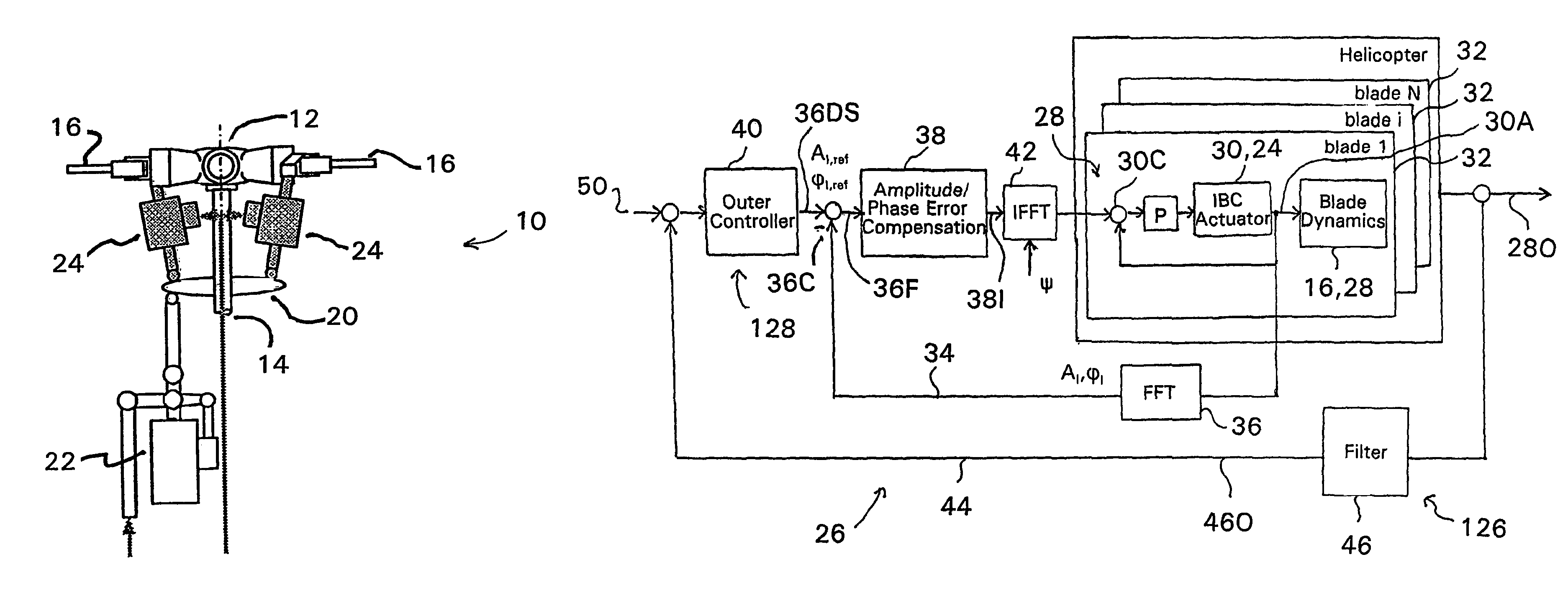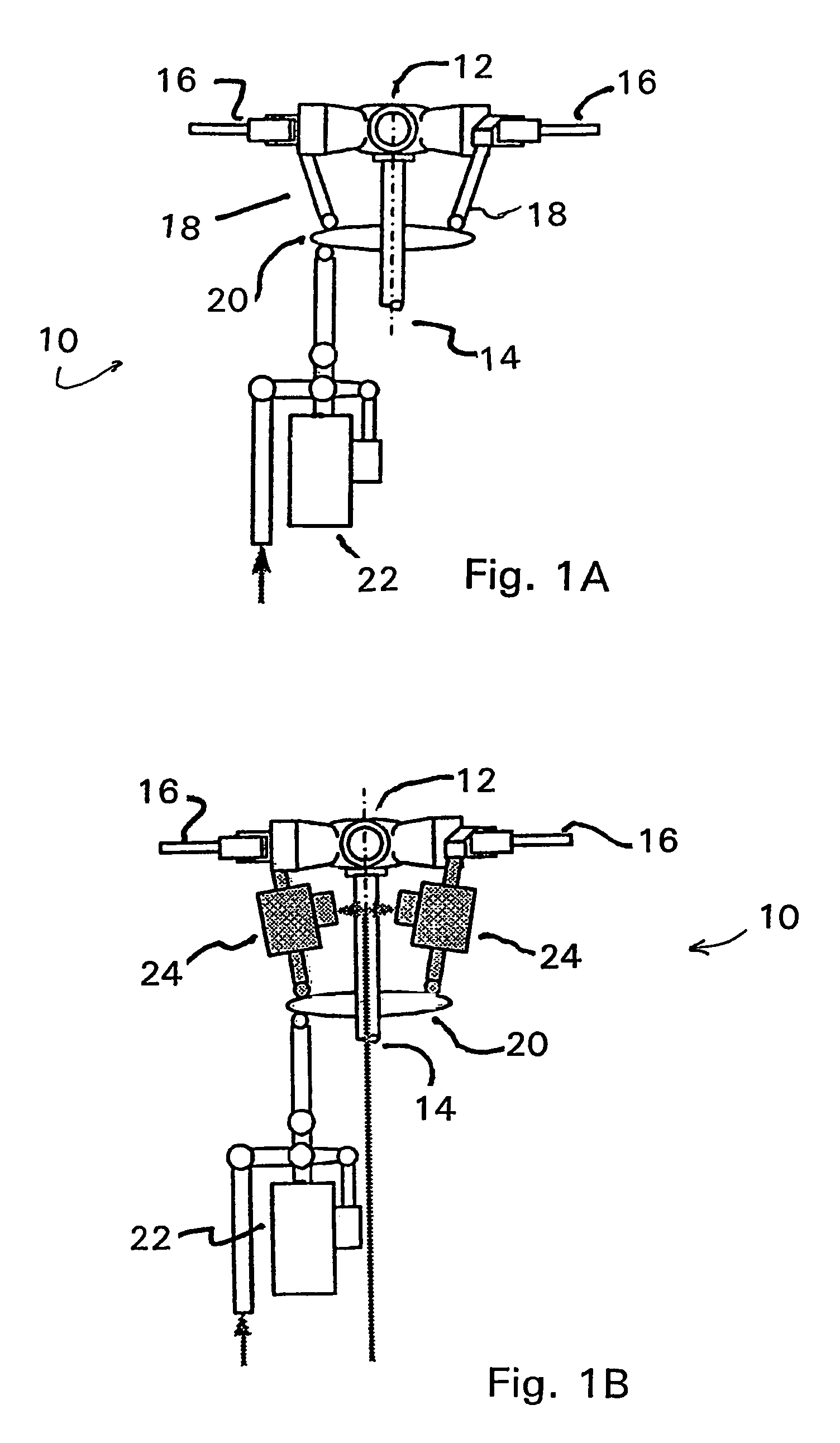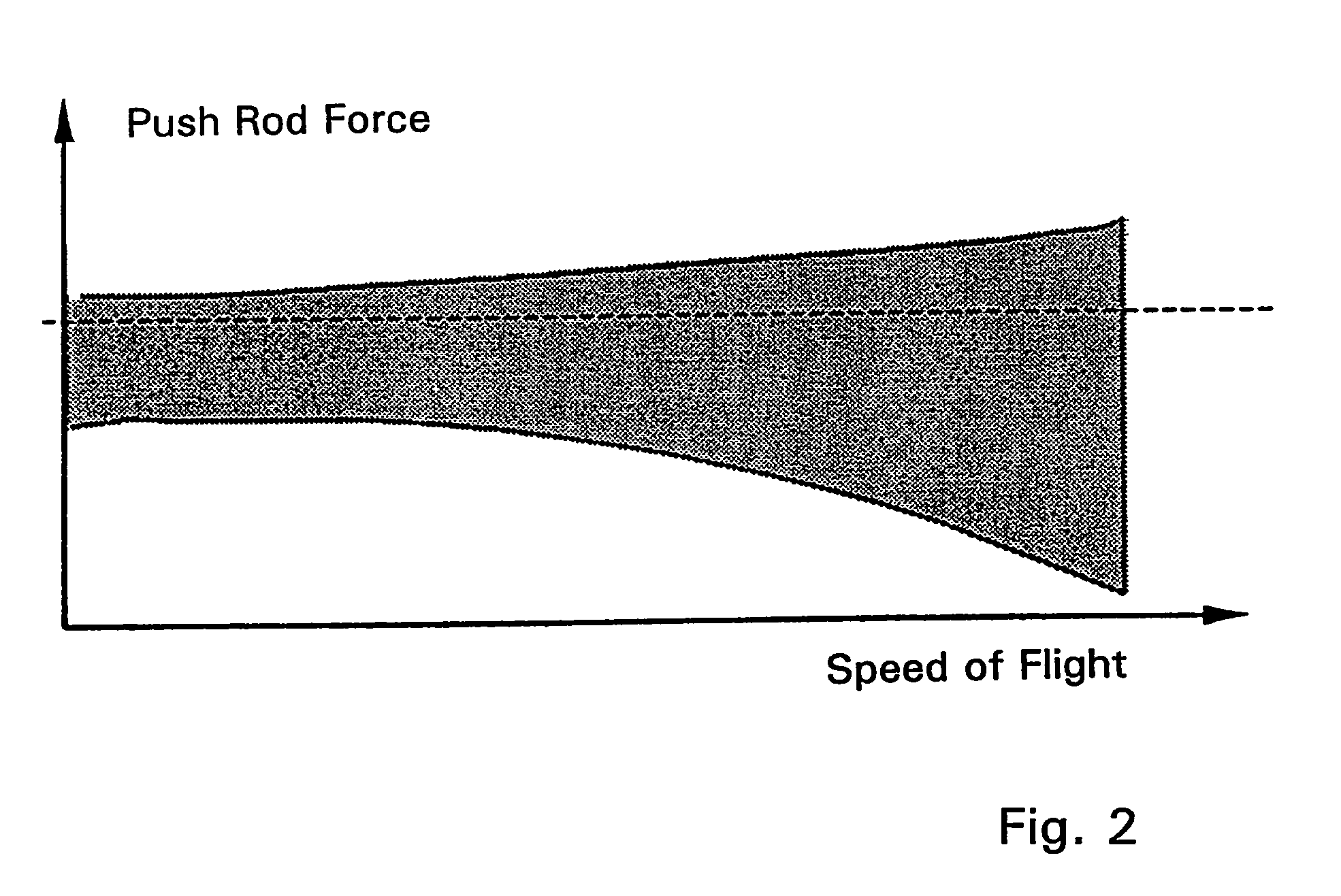Helicopter rotor control system with individual blade control
a control system and rotor control technology, applied in the direction of rotors, instruments, vessel construction, etc., can solve the problems of increasing power consumption, excessive noise generation, rapid change of dynamic loads on the blades during rotation, etc., and achieve the effect of reducing any or all of control loads and reducing the noise generated by the rotating rotor blades
- Summary
- Abstract
- Description
- Claims
- Application Information
AI Technical Summary
Benefits of technology
Problems solved by technology
Method used
Image
Examples
Embodiment Construction
A. Introduction
[0026]As described in detail in the following, the present invention provides a helicopter rotor control system having individual pitch control of each of the rotor blades through an individual pitch actuator for each blade and a rotor pitch control system that measures the vibration causing factors acting upon the rotor blades, determines a dynamic rotor pitch control signal for each individual rotor blade, and controls each rotor blade individually through an associated individual pitch actuator to dynamically correct or compensate for the factors causing vibration in each rotor blade individually.
[0027]As discussed above, the rotor control systems of the prior art typically determine a single rotor control signal as a factor of the desired lift from the rotor and the speed and direction signals generated from the pilot controls. That single control signal is then mechanically, electrically or hydraulically phase shifted and applied to the rotor swash plate, or the ...
PUM
 Login to View More
Login to View More Abstract
Description
Claims
Application Information
 Login to View More
Login to View More - R&D
- Intellectual Property
- Life Sciences
- Materials
- Tech Scout
- Unparalleled Data Quality
- Higher Quality Content
- 60% Fewer Hallucinations
Browse by: Latest US Patents, China's latest patents, Technical Efficacy Thesaurus, Application Domain, Technology Topic, Popular Technical Reports.
© 2025 PatSnap. All rights reserved.Legal|Privacy policy|Modern Slavery Act Transparency Statement|Sitemap|About US| Contact US: help@patsnap.com



